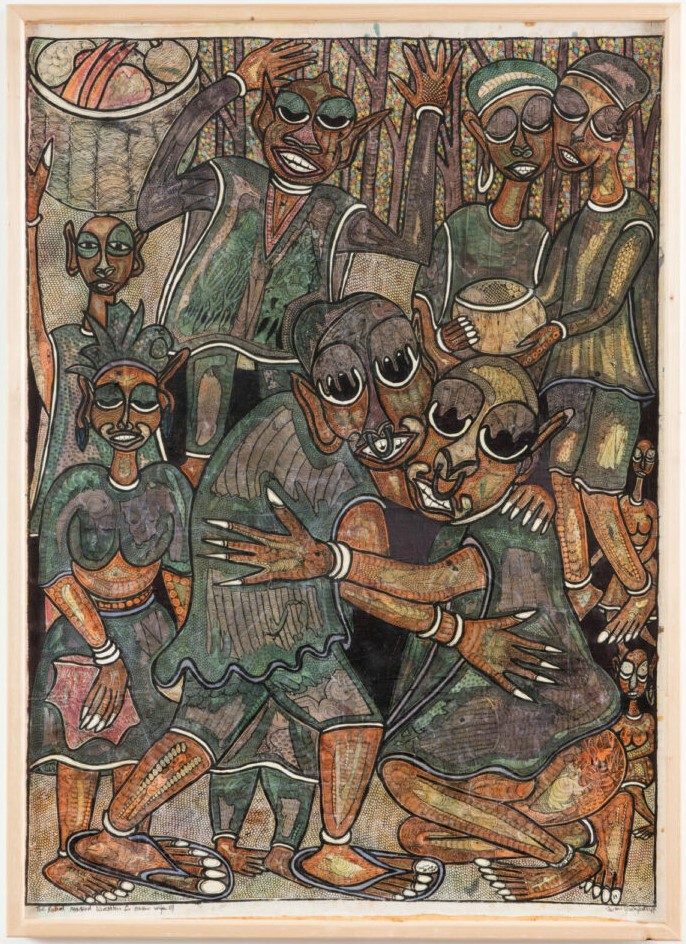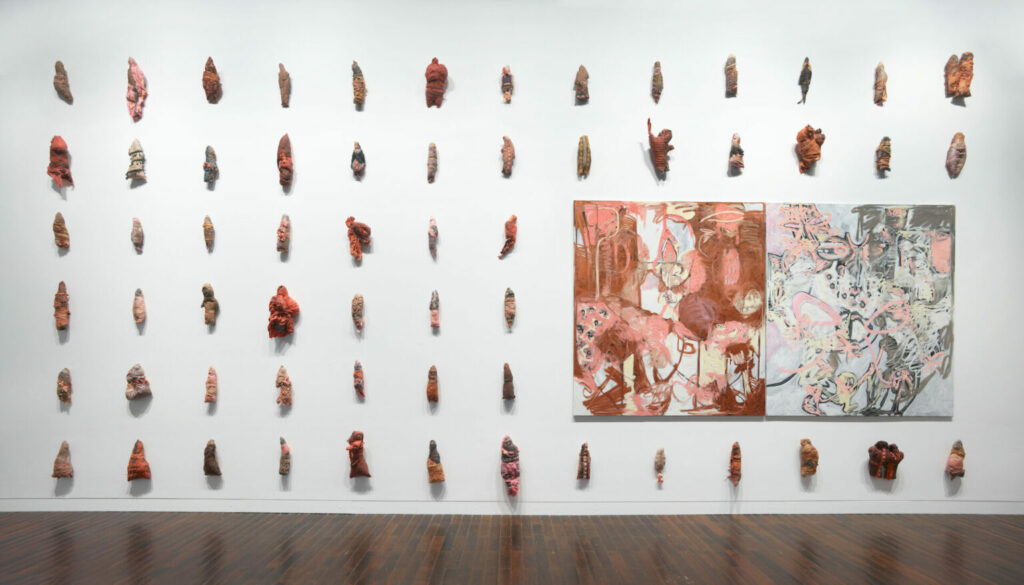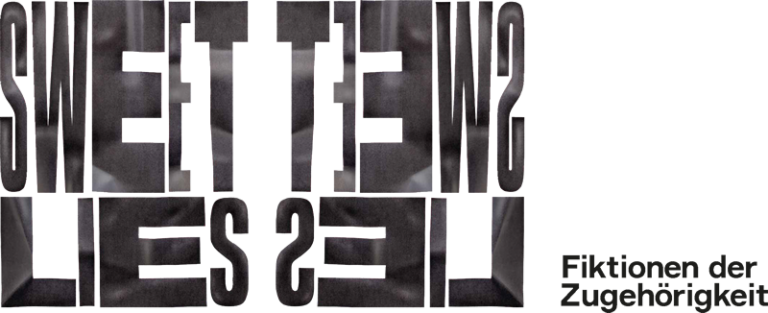Twins Seven Seven
* 1944 in Ogidi, Nigeria
† 2011 in Ibadan, Nigeria

It is typical for the works of Twins Seven Seven that they deal with cult and everyday scenes of the Yoruba, to which he himself belonged. The artist does not distinguish between experienced and dreamed events – rather, both spheres coexist on an equal footing and form the source material for his artistic productions. In The Ritual Masked Wrestlers for a new Wife, we encounter two people wrestling with each other, observed by bystanders. Except for the two seated female nudes on the right edge of the picture, the protagonists wear traditional clothing. The ornaments contained therein are also continued in the landscape depiction, the suggested forest in the background of the picture.
The artist shows here a cultic action, in which two masked men fight for a woman. The stylistic features characteristic of Twins Seven Seven, such as the claw-like hands or the oversized eyes of the depicted persons, are striking. The artist is not interested in capturing individual traits of a person, but in developing a human prototype with minor variations. The figures are only identifiable as Yoruba by their headdresses in the form of elongated or cylindrical caps, which are understood as symbols of Belonging, especially in Nigeria. The wearing of masks also suggests a Yoruba cult: At festivals, they serve to grant spirits, deities, and ancestors access to the community in this world. In addition, the markings on the skin could be read as decorative scars. Another reference to the Yoruba can be seen in the ornamentation, which is based on the patterns of traditional textiles. Yet it is precisely these internal drawings that develop a life of their own in the bodies of the figures. Born Taiwo Olaniyi Oyewale into a royal line of Yoruba, Twins Seven Seven changes his name because he is the only child to survive after his mother had previously given birth to seven sets of twins. The Yoruba are known for their unusually high number of twin births, but also for a high infant mortality rate. In this regard, Yoruba believe that deceased children within the family are born again and again until one survives. The change of name is therefore a testimony to the cultural identity of the artist and thus to be understood as a tribute to his ancestors. Thus he also wore the decorative scars typical of the Yoruba.
With all the references to Yoruba culture, it becomes clear that the artist is playing with the viewer: He deliberately relies on a pictorial language that is as formally simple as possible, foregoing individual features in order to evoke both stylized and stereotypical images of Africa. For this purpose, he uses not only the primeval vegetation in the form of the forest, but also the masks and the human prototypes with their ear and nose rings. The associations that this evokes in viewers are fed by the selective perception of an entire continent that emerged in the course of Colonialism in the Global North and persists to a large extent to this day. At the same time, Twins Seven Seven has been committed to cultural Awareness throughout his life, and so he was also interested in drawing attention to Yoruba culture.
in dialogue with

Melike Kara
mother of mother of mother, 2021
